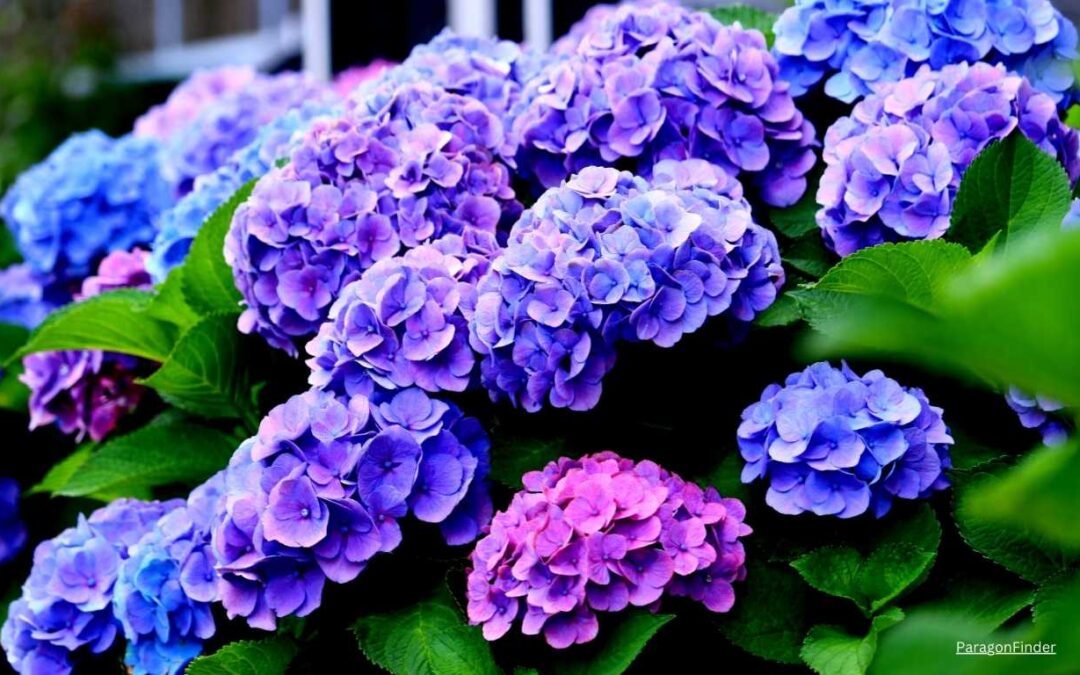Hydrangeas are a beloved garden plant known for their stunning and versatile blooms. One of the most fascinating aspects of hydrangeas is their ability to change color based on the soil’s pH level. If you’ve ever wondered how to change hydrangea color with fertilizer, this guide will provide you with simple, step-by-step instructions based on both research and personal experience.

Understanding Hydrangea Color Changes
Before diving into the process of changing hydrangea color with fertilizer, it’s essential to understand why hydrangeas change color in the first place. The color of hydrangea flowers is primarily determined by the soil’s pH level:
- Acidic Soil (pH below 6.0): Produces blue or lavender-blue flowers.
- Neutral to Alkaline Soil (pH 6.0 to 7.5): Results in pink or red flowers.
The availability of aluminum ions in the soil also plays a crucial role. Acidic soils increase aluminum availability, leading to blue hues, while alkaline soils limit aluminum availability, resulting in pink tones.
Personal Experience: My Journey with Hydrangeas
When I first planted hydrangeas in my garden, I was delighted by their lush, green foliage and abundant blooms. However, I was puzzled when my initially blue hydrangeas started turning pink. This led me to research how to manipulate their color using fertilizers and soil amendments. Here’s what I learned and applied, with excellent results.
Step-by-Step Guide to Change Hydrangea Color with Fertilizer
1. Testing Your Soil pH
The first step in changing your hydrangea color with fertilizer is to test your soil’s pH. You can purchase a soil pH test kit from a garden center or use a digital pH meter. Knowing your soil’s current pH will guide you in choosing the right amendments.
Steps:
- Collect soil samples from around the base of your hydrangeas.
- Follow the instructions on your pH test kit to determine the soil pH.
2. Choosing the Right Fertilizer
To change hydrangea color with fertilizer, you need to select the appropriate type of fertilizer based on the desired flower color.
For Blue Flowers:
- Use fertilizers high in aluminum sulfate, such as a 25-5-30 (Nitrogen-Phosphorus-Potassium) mix.
- Aluminum sulfate helps to lower the soil pH and increase aluminum availability.
For Pink Flowers:
- Use fertilizers higher in phosphorus, such as a 10-30-10 mix.
- Phosphorus helps to neutralize aluminum, raising the soil pH.
3. Applying Fertilizer for Blue Hydrangeas
Materials Needed:
- Aluminum sulfate
- Acidic fertilizer (25-5-30)
- Mulch (pine needles or peat moss)
Steps:
- Soil Preparation: Remove any weeds or debris around the hydrangea base.
- Mixing Fertilizer: Mix 1 tablespoon of aluminum sulfate with one gallon of water. Apply this mixture to the soil around your hydrangeas once a month.
- Acidic Fertilizer: Apply the 25-5-30 fertilizer according to the package instructions, usually once every two weeks.
- Mulching: Add a layer of acidic mulch, such as pine needles or peat moss, around the base of the plants to maintain soil acidity.
4. Applying Fertilizer for Pink Hydrangeas
Materials Needed:
- Garden lime or dolomitic lime
- Fertilizer high in phosphorus (10-30-10)
Steps:
- Soil Preparation: Clear the area around your hydrangeas of any debris.
- Lime Application: Sprinkle garden lime around the base of the hydrangeas, following the package directions. Lime helps to raise the soil pH.
- Phosphorus Fertilizer: Apply a 10-30-10 fertilizer as per the manufacturer’s recommendations, usually once every two weeks.
- Watering: Water the plants deeply to help the lime and fertilizer penetrate the soil.
5. Regular Maintenance and Observation
Changing hydrangea color with fertilizer is not an overnight process. It requires regular maintenance and observation. Here are some tips:
- Monitor Soil pH: Test the soil pH every few weeks to ensure it is moving in the desired direction.
- Adjust Fertilizer Use: Based on the pH readings, adjust the amount and frequency of fertilizer application.
- Watering: Keep the soil consistently moist but not waterlogged. Hydrangeas thrive in well-drained, moist soil.
Troubleshooting Common Issues
Color Changes Not Happening
If your hydrangeas are not changing color as expected, consider the following factors:
- Soil Type: Some soils resist pH changes more than others. Sandy soils are easier to amend than clay soils.
- Fertilizer Quality: Ensure you are using high-quality, appropriate fertilizers and soil amendments.
- Water Quality: If your water is alkaline, it could be counteracting your efforts. Consider using rainwater or filtered water.
Leaf Burn or Damage
Over-application of fertilizers, especially aluminum sulfate, can cause leaf burn. To avoid this:
- Dilute Fertilizer: Always dilute fertilizers and aluminum sulfate in water before application.
- Even Distribution: Ensure even distribution around the plant to prevent root burn.
Alternative Methods to Change Hydrangea Color
Aside from using fertilizers, there are other methods to change hydrangea color:
Using Coffee Grounds
Coffee grounds can help to acidify the soil for blue hydrangeas. Simply sprinkle used coffee grounds around the base of the plants and mix them into the soil.
Vinegar Solution
A diluted vinegar solution can temporarily lower soil pH. Mix one cup of white vinegar with one gallon of water and apply it to the soil around your hydrangeas once a month.
Eggshells for Alkaline Soil
Crushed eggshells can help raise the soil pH for pink hydrangeas. Scatter crushed eggshells around the base of the plants and work them into the soil.
Conclusion: The Beauty of Customizing Your Garden
Changing hydrangea color with fertilizer is a rewarding gardening endeavor that allows you to personalize your garden’s appearance. Whether you prefer the serene blues or vibrant pinks, with a little effort and the right know-how, you can enjoy the hydrangea blooms of your dreams.
In my own garden, the transformation from pink to blue hydrangeas brought a sense of accomplishment and beauty that enhanced my gardening experience. By understanding the science behind soil pH and aluminum availability, and through careful application of fertilizers and amendments, you too can achieve stunning results.
Remember, patience is key. With consistent care and attention, your hydrangeas will reward you with their dynamic and colorful display. Happy gardening!

